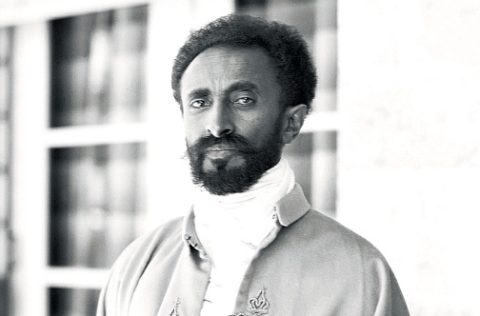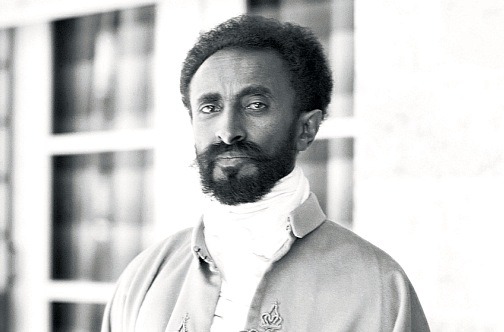TO many Rastafarians in Jamaica today, the ongoing kufuffle over the legal ownership of lands at Pinnacle and the resurrection of the unresolved judicial issues surrounding the events at Coral Gardens raise yet again profound questions concerning the age-old issue of the legitimacy of adherents of the Rastafarian movement to seek equitable accommodation within a society whose motto is ‘Out of Many, One People’.

Based on these occurrences, and the fact that respect continues to elude the genuinely native movement, the impression is given that although much water has flowed under the bridge since Haile Selassie’s visit in April 1966, adherents of the faith continue to struggle in Babylon for acceptance.
In this Afro-centric nation of ours, it would appear that it is easier to import American democracy or Bolshevik redemption, rather than strive to build and craft our own modalities for survival. Anglo-Saxon culture imported in packaged forms has long been the staple commodity for many among us with ambitions of upward mobility and leadership.
To complicate matters, the society is awash with pundits and talk-show hosts contending almost daily that Jamaicans have no interest in ideas because bread-and—butter issues are all that matter, especially in these times of austerity.
Yet, despite the persistence of this insulting misperception and contradictory phenomenon, the mass of the population keeps turning to either the Bible or Jah (the divine name for Haile Selassie) for bodies of ideas to sustain them in coping with this lopsided land they are supposed to call their own.
Consequently, we have witnessed over these many decades where the Rastafarian movement has remained the clearest expression of native wisdom in the creation of our own destiny and the demonstration of the innate structures of sophisticated thought that reside among the real people in the land. Indeed, money matters in these hostile economic times, but Jah — like God, Mohammed, etc — lives!
What this ought to mean to the discerning observer is that there remain good reasons why many Jamaicans still have strong feelings towards Haile Selassie, never mind that he died in 1975 in Ethiopia while in detention following a ‘people’s revolution’ in 1974 led by army officers.
As the once crucified Christ lives in the minds of Christian believers, Jah still lives for the over 30,000 Rastafarians identified by the 2011 Population and Housing Census as domiciled in Jamaica. And among fundamentalist Rasta believers, it is still doubtful whether Selassie died at all since — as in the case of Maurice Bishop of Grenada — there is no evidence (so far as I know) of where his body lies.
Furthermore, apart from Nelson Mandela, no other foreign head of state attracted the level of attention from Jamaican citizens than that accorded the emperor in April 1996 at the then Palisadoes Airport when he visited with his grandson, Prince Dawit.
As several scholars have noted, this demonstrated how alienated the vast majority of the populace were, where true feeling really lay, and what was the extent of the failure of the then newly independent Jamaica to provide a sense of place and purpose for its people.
The seminal point is that the emperor’s visit was designed to facilitate ongoing accommodation between the Rastafarian community, the Jamaica Labour Party (JLP) Administration, and the wider society which, between 1959 and 1966, were openly hostile to the movement. All that locks and tam, coupled with the dashing red, green and gold attire, grated on the sensibilities of the Jamaican middle class.
And shouts in the 1960s of “blood and fire!” by the brethren and sistren of the movement, directed at Caucasians and ‘baldheads’ alike, were designed to establish its authority and legitimacy here in Babylon.
Much has changed with the movement since then, which would lead us to expect a perceptible ease in the tension between it and the wider society. We have had the migration in droves of the children of the middle class into the Rasta movement, beginning in the 1970s, for example, which has rooted it more in Jamaica than in Ethiopia.
And the Twelve Tribes brothers and sisters — some of them baptised into the Ethiopian Orthodox Church which, according to its representatives on TVJ’s Smile Jamaica morning programme on Ash Wednesday, does not attest to Selassie’s divinity — further reinforce the movement’s accommodations in Jamaica.
In any event, the movement’s ideological fractiousness notwithstanding, it is doubtful whether we can refer to it any longer as a predominantly “Jamaican poor people protest social movement”. Many of today’s Rastas command wealth and star status; and there are more ‘baldhead’ committed Rastas now than ever before.
We should not lose sight of the fact either that beginning with the international superstar status of Bob Marley (and the Wailers) in the 1970s/80s, there has been a phenomenal growth in Rastafarian adherents in metropolitan centres across the entire spectrum of the globe — from Africa, Europe, and the North Atlantic to Japan, not to mention the rest of the Caribbean, Central and South America.
Accommodations with Babylon have even gone in the direction of Rasta-chic: fashion, diet, speech patterns, cuisine, entertainment, etc, all of which make ‘Back-to-Africa’ a doubtful proposition.
With this mounting body of evidence of the unique affection carried by many thousands of Jamaicans at home and abroad — and an even greater number of global citizens — for the Rastafarian movement, what weight is a Jamaican Government in the 21st Century willing to place on such loyalties to Jah, Ethiopia and to Haile Selassie in particular?
Are thorough-going orthodox Christian Cabinet ministers willing to facilitate the accommodation of the brethren and sistren, once and for all, over those issues of lingering concerns to the movement?
When, for instance, can we expect the current minister of health, the affable Dr Fenton Ferguson, in spearheading his own ministry’s healthy lifestyle campaign, to publicly declare that the Rastas were right all along in emphasising healthy ‘livity’ in the form of the abandonment of sodium in our diets and growing what we eat?
And, if my memory serves me correctly, was it not the Rastas who, some seven decades ago in the New World, first foresaw the medicinal benefits of the weed they call ganja?
The old argument that the Rastafarians, if encouraged, would be inclined to pledge allegiance to a former foreign head of state who is now deceased, and that the rebellious faction of the movement on Jamaican soil represents a violation of Jamaican nationalism, should no longer be entertained by well-thinking Jamaicans.
If the wider society has very few problems with Jamaican Catholics who regard the pope as their spiritual leader, it should have no problem with the Rastafarians who regard His Imperial Majesty Haile Selassie as theirs.
The issue really boils down to one of tolerance, and we should not wait until the wrath of the Rastafarians surfaces again to seriously put into practice the message of our national motto.
Jah lives! And there is nothing we can do to stop this.





